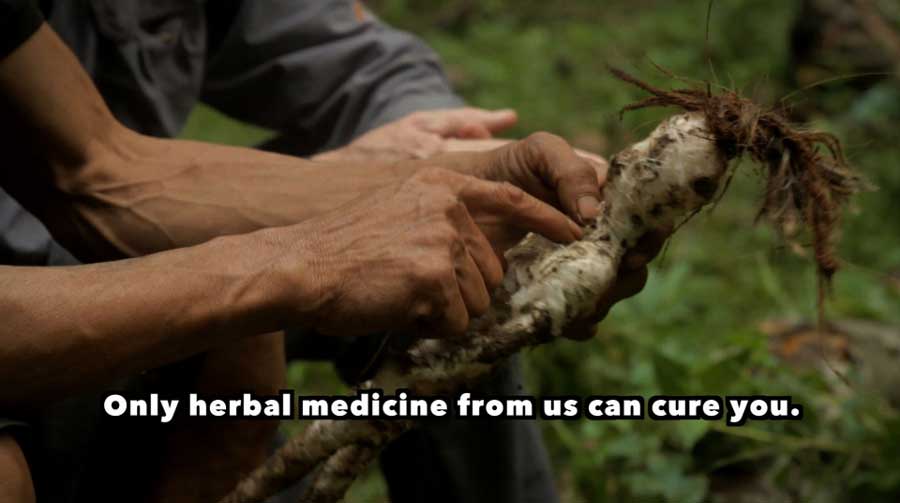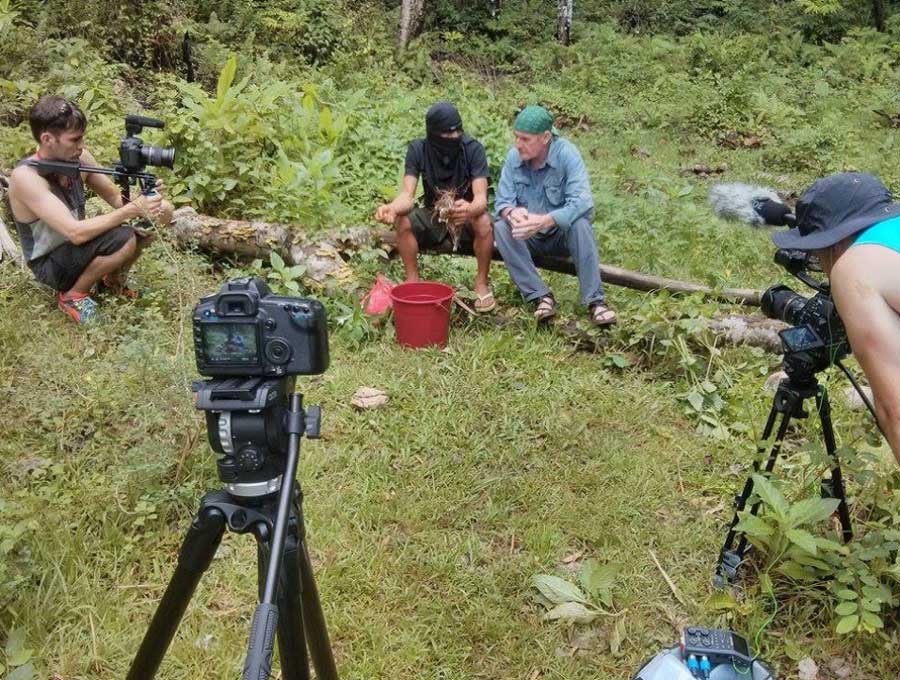Back in 2014 I received a Facebook message from British filmmaker, Matt Everett. He enthusiastically explained how he was making a documentary on the aswang and that he hoped to find one. I’m a natural skeptic, so I didn’t have any leads for him, but we remained in communication about the progress of his film. Well, I’m happy to report that Matt has finished his film and it is available to watch online!
“Search For The Aswang” starts off with host Will Davis giving us a quick historical primer on the Philippines, then quickly moves into stories of superstition, the supernatural and the super creepy. Ever wondered how the Mambabarang create their powerful voodoo dolls? Matt has managed to catch the whole process of this specialized witchcraft on camera. If that weren’t unnerving enough, we are then introduced to Titing, a self-proclaimed aswang. Titing tells his story so convincingly that I found myself questioning my steadfast beliefs and hypothesis on the subject.
I generally don’t enjoy TV monster hunts, but Matt has produced a really interesting film that includes wonderfully animated sequences and a fascinating look at local empiricist beliefs. One thing that really impressed me is that, unlike many sensationalized local presentations, Search For The Aswang respects all of its participants and the culture they represent.
Do they find an actual aswang? Watch the documentary on YouTube or Vimeo to find out. Below is an interview with Matt Everett about the challenges of making the film, and his love of the Philippines.
“I can say that it is refreshing to go to a place where there is still some wonder and mysticism left in the world.” – Matt Everett, Search for the Aswang
Follow Matt Everett and Thuderhawk Productions on Facebook or their Official Website.
An Interview with Matt Everett
Tell me a bit about The Search For The Aswang? What inspired you to make the documentary?
My Filipina wife introduced me to the Aswang. She told me about an experience she had had after reading a passage from an ancient Latin book that belonged to her father. She said that the incantation brought you luck, but at the same time made you susceptible to the paranormal. One night she saw a headless priest floating outside the local chapel. Another time, she went to a sari-sari store to buy some paraffin for a lamp and on her way back she encountered a tall skinny man with glowing red eyes who chased her and transformed into a cat and a dog. Of course I was a skeptic of this but at the same time I knew that my wife would not knowingly invent such a story. Researching the two experiences I found that others had had similar encounters with the same creatures. I was introduced to stories of the Manananggal, Kapre, Duwende and a whole variety of supernatural beings. I discovered The Aswang Phenomenon documentary which filled in the blanks and decided that I wanted to explore the Aswang myself.
What was the biggest challenge in making this documentary?
To make my film different I decided not to try and explain the Aswang, but to find one. Of course trying to find monsters, or people claiming to be monsters, is not an easy task. I came across a story about a self proclaimed Aswang who confessed to Magandang Gabi Bayan on ABS-CBN. After tracking him down and speaking with him, I concluded he was a fraud doing it for money. This was a blow to the film but miraculously my wife’s father said he knew an Aswang and had known him for many years.
When I first met Titing (the Aswang who is featured in my film) it was the night before the interview and I was not expecting such an elderly person. He is also only about 5ft tall – not exactly what I was expecting for the most feared creature in Philippine folklore. While we were talking I noticed he was trembling and his eyes were abnormally white. He kept saying that he might have to go because he didn’t want to harm us and that he was struggling to control himself from transforming. He kept asking if the moon was out and said that during a full moon he had no control over it. I can also confirm that it was a full moon that night! He said that when he transforms he doesn’t know what he is doing and that he has no control over it. He gave me no reason to doubt his claims and he genuinely believes he is an Aswang. The following day we conducted the interview which you can see in the film.

Why do you think belief in folkloric creatures, like the aswang, is still so prevalent in the Philippines?
I think that the Filipino’s belief in the creatures of folklore is founded on superstition, stories and their religiousness. The belief in Aswang is definitely more prolific among the provincial population. Their way of life is more rooted in the past and in religion. The belief in good and evil plays a big role in their lifestyle. I have met a lot of Filipinos with stories of the Aswang and they believe it as much as they believe in God. So what is the logical explanation? I’m afraid I don’t have it. I can say that it is refreshing to go to a place where there is still some wonder and mysticism left in the world.
Are there any other creatures you are interested in searching for?
I can confirm that I might make another documentary about Philippine Folklore. I would like to return to Siquijor during good Friday when all of the potions are made in the mountain caves. I would also like to pursue an investigation into the alleged Manananggal family. For me, it is the most terrifying creature of the Aswang family. I heard stories of a Manananggal living in a community. When my fixer approached the woman he was met with hostility and claimed her long hair came towards his face as if enchanted. I hear she has jars of blood in her house and some have even claimed to see her in her Mananaggal form with a blood stained mouth. I was told she originated from Siquijor and that all of her sisters were also Manananggal.
Where’s your favourite place in the Philippines, and why?
I have spent much of my time in and around Cebu but I would have to say that the nicest place I have been to is probably the mountain jungles I visited in Mindanao when filming the Lumad Tribe. Primarily because its quiet and unspoiled. I would like to travel to Palawan as I’ve heard it’s the most beautiful of the 7000 Islands. I’m a sucker for the provinces and love the beaches and jungles.

Jordan Clark is a Canadian born descendant of Scottish immigrants living on the homelands of the Lekwungen speaking peoples. His interest in Philippine myth and folklore began in 2004. Finding it difficult to track down resources on the topic, he founded The Aswang Project in 2006. Shortly after, he embarked on a 5 year journey, along with producing partner Cheryl Anne del Rosario, to make the 2011 feature length documentary THE ASWANG PHENOMENON – an exploration of the aswang myth and its effects on Philippine society. In 2015 he directed “The Creatures of Philippine Mythology” web-series, which features 3 folkloric beings from the Philippines – the TIKBALANG, KAPRE and BAKUNAWA. Episodes are available to watch on YouTube. Jordan recently oversaw the editing for the English language release of Ferdinand Blumentritt’s DICCIONARIO MITOLÓGICO DE FILIPINAS (Dictionary of Philippine Mythology) and is working on two more releases with fellow creators scheduled for release later this year. When his nose isn’t in a book, he spends time with his amazing Filipina wife of 20 years and their smart and wonderful teenaged daughter.


